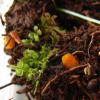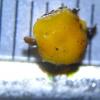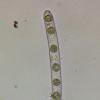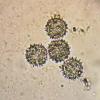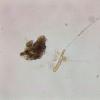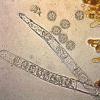
20-12-2025 23:08
Patrice TANCHAUDBonsoir, récolte sur sol sablonneux dans l'arri�

21-12-2025 09:32
Hello.A tiny ascomycete found embedded in wood in

20-12-2025 15:47
Mirek GrycHi.These grew on pine wood that was heavily covere

18-12-2025 21:17
Pol DebaenstThe identification took me to Byssonectria deformi

15-12-2025 07:09
 Danny Newman
Danny Newman
indet. Rutstroemiaceae sp. on unk. fallen leavesMc

19-12-2025 10:10
Patrice TANCHAUDBonjour, récolte réalisée en milieu dunaire, a

18-12-2025 17:23
 Bruno Coué
Bruno Coué
Bonjour,je serais heureux d'avoir votre avis sur c
Hello forummembers,
I found several FRB's in two different places (distance +/- 500 m) on the dried banks of two different brooks
a) 24/06/2015 Staatsbos Sevendonk Turnhout, Belgium
b) 26/06/2015 Winkelsbroek Turnhout, Belgium
Macroscopic features:
Substrate: found on the dried banks of two brooks on a muddy soil full of plants and herbal roots (a = bare soil, b = soil full of leaf litter).
FRB: sessile, flat to cushion-shaped with diameter smaller than 5 mm; dark yellow to orange colored with a jagged edge slightly paler, alone or in bundles (squeezed together)
Microscopic features (all dimensions in water): fresh material in water and in Melzer.
asci : cylindrical, uniseriate; IKI-; croziers present
a) 267,47-294,88 x 15,04-23,32 µm
b) 217,36-261,03 x 15,26-24,11 µm
spore: hyaline, globose tot broadly ellipsoid with spines:
a) 16,23-17,64 x 13,23-16,14 µm; spines: 1,79-3,42 µm; Q= 1.016
b) 15,93-18,91 x 17,03-18.06 µm; spines: 2,89-4,37 µm; Q= 1.11
Paraphyses : 320 x 5.8 µm, top irregular clavate (8-12 µm) with pale orange content; slender, filiform with septs
Texture: globulosa, angularis
Marginal cells: 147-170 x 21-30 µm; elongated cells with 5 septs, constricted en rounded top.
After reading about the genus Ramsbottomia (Dieter Benkert, Nicolas Van Vooren and Yannick Mourgues, I think it is Ramsbottomia crechqueraultii.
Being an amateur I am somewhat confused. The difference between globose and broadly ellipsoid, the difference in spore length of 1 to 4 µm is susceptible to interpretation. Furthermore in Mycobank the current name is Lamprospora...
I hope I have got the right determination? I still have to learn much and accept that not everything is clarified!
Kind regards,
François
Votre champignon, avec ses spores échinulées correspond parfaitement à Ramsbottomia crechqueraultiiI Il n'entretient aucun rapport avec les mouses même si, parfois, on en trouve quelques unes à son voisinage. De ce fait, il a été exclu des Lamprospora.
Le genre Ramsbottomia a été créé pour ces espèces à spores rondes (ornées d'épines voire de très fortes épines), non muscicoles, pouvant présenter quelques poils comme sur votre photo
Amicalement
Gilbert
Je vous remercie beaucoup pour votre réponse rapide.
Cordialement,
François

